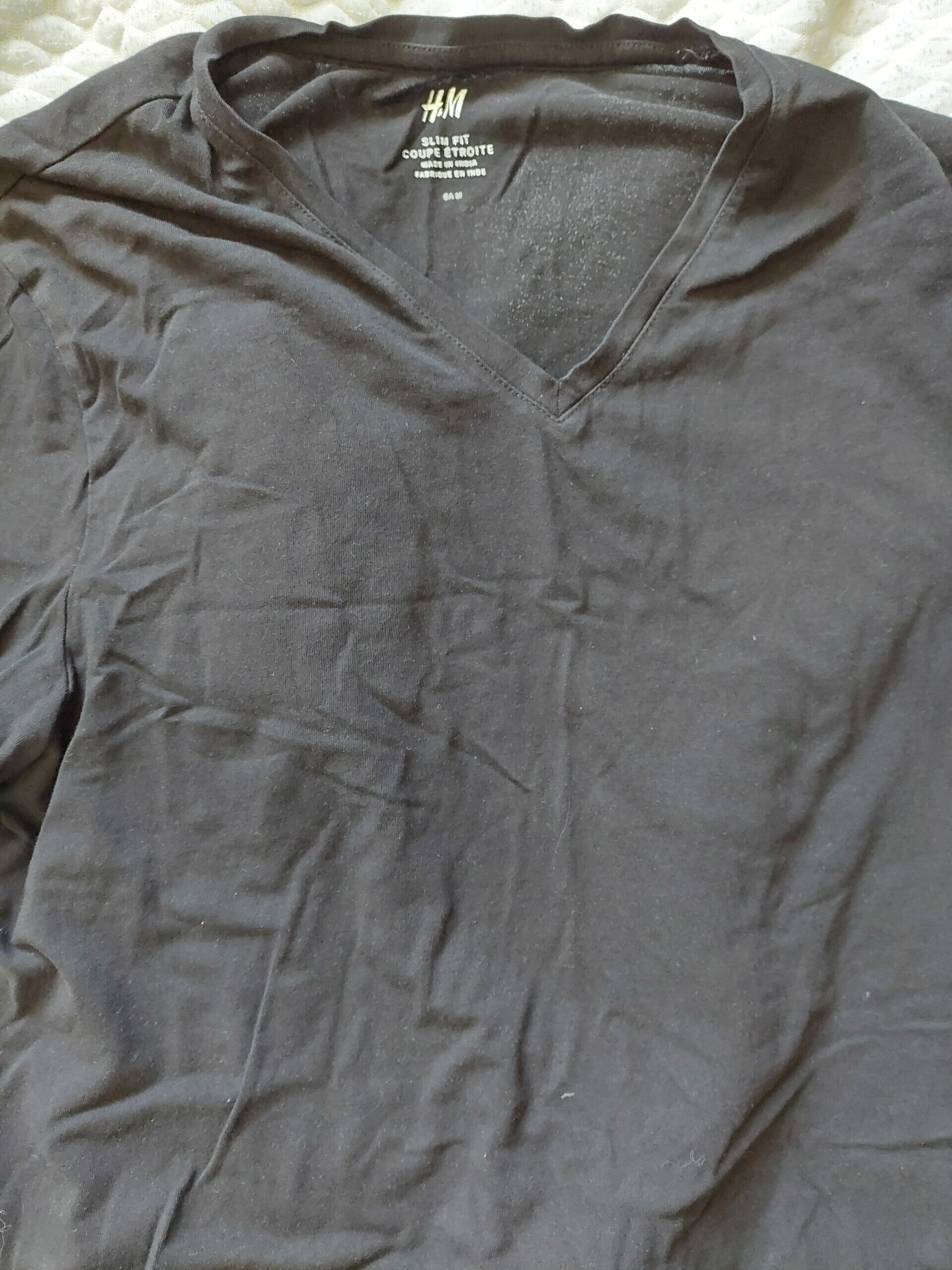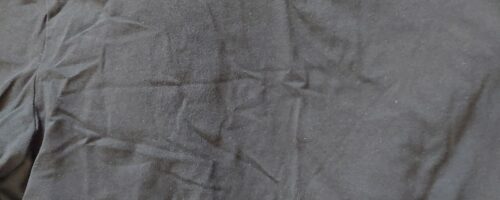
Sector 63, Noida, Uttar Pradesh, India
How is it produced?
This particular T-shirt came from India. The raw material, cotton is organic, recycled or sourced through the Better Cotton Initiative (H&M Group, 2021). The Better Cotton Initiative is a non-profit organization that helps cotton growers convert to more environmentally friendly, and socially and economically sustainable farming methods (H&M Group, 2021). The BCI’s cotton comes from “25 countries around the world and accounts for 23% of global cotton production” (Better Cotton , 2022). After sourcing the cotton for the t-shirt it must be turned into yarn. According to H&M they employ “responsible purchasing practices”, which includes using a fixed labour cost and only negotiating prices on raw materials (H&M Group, 2021). This means that “garment workers’ wages are never negatively affected by price negotiations and responsible purchasing practices support the development of fair living-wages” (H&M Group, 2021)
Describe the supply chain to the store shelf in Canada:
There are a few interventions from transnational institutions like the World Trade Organization and trade agreements that allowed my T-shirt to end up being sold in an H&M store. Canada and the other members of the WTO signed an Agreement on Textiles and Clothing (ATC) that “eliminated the system of quantitative restraints (quotas) maintained on imports of textiles and clothing from low cost sources over a ten year transition period, starting from the date of implementation in on January 1, 1995 (Canadian Apparel Federation , 2022). This means as of January 1, 2005 Canada completely removed import quotas.
On September 21, 2017 the Comprehensive Economic and Trade Agreement (CETA) between Canada and the European Union (EU) was provisionally applied (Government of Canada , 2022). Under CETA, Canada and the EU agreed to establish a number of “origin quotas to allow for specific quantities of some products to receive preferential tariff treatment if the products meet certain conditions” which includes apparel (Government of Canada , 2022).
The CETA agreement and Canadas membership to the WTO directly impacts H&M as they are a European apparel company. These helped my t-shirt arrive on Canadian shelves. Without these agreements it’s entirely possible it could be too expensive for H&M to import their clothing into Canada or it would be outright not allowed if the quota was reached.
What is the power balance between the producer and seller?
The balance of power between H&M and its suppliers clearly falls in favour of the fashion giant. In fact it falls in favour of H&M so much that a lot of the “progress” they have made as outlined in the first section is not as great as they are making it seem. The changes they have made seem to be more for improving their public image than actually making any real changes to corporate accountability, providing living wages, improving worker safety or reducing their environmental impacts. For example let’s examine the accord H&M signed on Fire and Building Safety in Bangladesh. Based on this accord engineers inspected 32 H&M Platinum and Gold factories (Clean Clothes Campaign, International Labor Rights, Maquila Solidarity Network, & Worker Rights Consortium, 2015). Upon this inspection they uncovered a total of “518 violations of structural safety requirements, 836 fire safety violations and 650 electrical safety violations, all requiring correction, an average of 62 safety violations per factory” (Clean Clothes Campaign, International Labor Rights, Maquila Solidarity Network, & Worker Rights Consortium, 2015). For each violation the accord specified corrective actions with a deadline to complete that action. Of all required corrective actions needed at H&M’s Gold and Platinum factories, 52% are behind schedule. More specifically 71.6% of structural renovations, 50.1% of fire safety repairs, and 37.8% of electrical repairs are behind schedule (Clean Clothes Campaign, International Labor Rights, Maquila Solidarity Network, & Worker Rights Consortium, 2015). Every factory has at least one required safety renovation behind schedule and that “28 of the 32 (87.5%) have between 10 and 89 safety renovations that have still not been completed” (Clean Clothes Campaign, International Labor Rights, Maquila Solidarity Network, & Worker Rights Consortium, 2015). This is very concerning given that these 32 suppliers are described by H&M as its “most important, closest and most ethical business partners”. (Clean Clothes Campaign, International Labor Rights, Maquila Solidarity Network, & Worker Rights Consortium, 2015) Clearly H&M isn’t making as much progress as they claim.
Can you recommend changes to the system to improve the balance?
It’s increasingly clear that H&M is just giving the illusion of corporate accountability but in reality has made few tangible changes to improve the wages and working conditions of their workers. H&M continues to be a fast fashion giant that has benefits from using low cost labour in developing nations, while manipulating the political landscape and lack of accountability in these countries to improve their bottom line. While they claim to be making big changes in the name of corporate accountability and sustainability the truth is they have done very little to change and seemingly just want to improve their public image. In order to improve the imbalance all they would have to do is just follow the Accord they signed and work on all the accountability items they discuss on their website. Allowing the workers to form unions would also be incredibly helpful in changing the power imbalance but this won’t happen because it will negatively impact their bottom line.
References/Resources:
Better Cotton . (2022, May 1). Who We Are. Retrieved from Better Cotton : https://bettercotton.org/
Canadian Apparel Federation . (2022, May 1). World Trade Organization (WTO) Agreement on Textiles and Clothing. Retrieved from Canadian Apparel Federation : https://www.apparel.ca/trade_agreements.html
Clean Clothes Campaign. (2013). Rana Plaza. Retrieved from Clean Clothes Campaign: https://cleanclothes.org/campaigns/past/rana-plaza
Clean Clothes Campaign, International Labor Rights, Maquila Solidarity Network, & Worker Rights Consortium. (2015, September). Evaluation of H&M Compliance with Safety Action Plans for Strategic Suppliers in Bangladesh. Retrieved from Clean Clothes Campaign: file:///C:/Users/Kodie/Downloads/HM_Bangladesh_September%202015.pdf
Ellwood, W. (2015). Globalization Buying and Selling the World. Oxford: New Internationalist Publications Ltd .
Government of Canada . (2022, February 2016). CETA Origin Quotas. Retrieved from Global Affairs Canada : https://www.international.gc.ca/controls-controles/prod/ceta_origin_quotas-contingents_origine_aecg.aspx?lang=eng
H&M Group. (2021, December). Supply chain. Retrieved from H&M Group: https://hmgroup.com/sustainability/leading-the-change/transparency/supply-chain/#supplierListContainer
Musiolek, D. B. (2018, September). H&M: Fair Living Wages were Promised, Poverty Wages are the Reality. Retrieved from Turn Around H&M: https://turnaroundhm.org/hm-wages-september2018-full-107815e8a7bc3bd4ffbfeca3426f1dcd.pdf
Rodrik, D. (2011). The Globalization Paradox: Democracy and the Future of the World. New York: W. W. Norton & Company.

